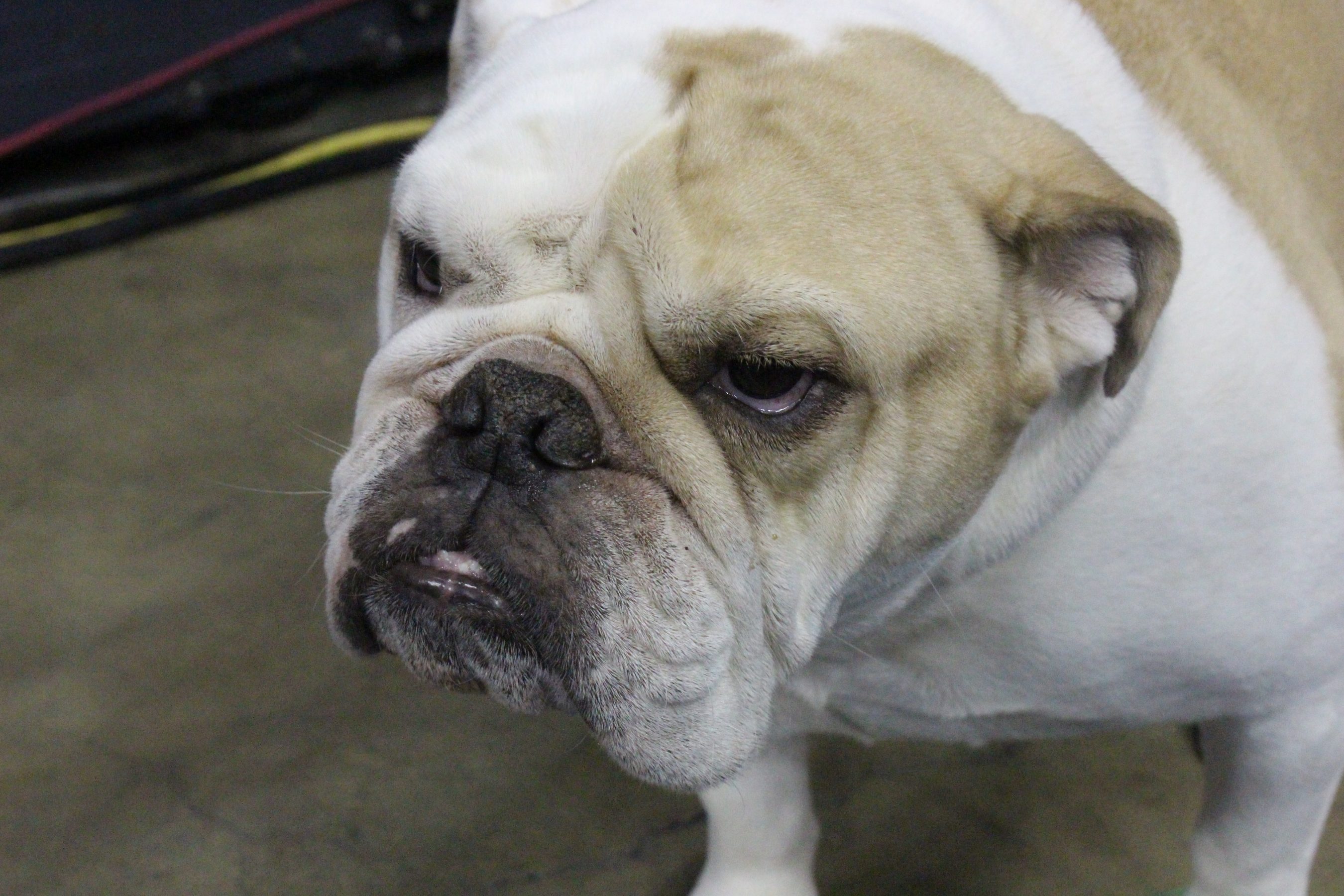A series of Jack the Bulldogs have been at Georgetown for 57 years. He became the university’s official mascot after a committee of students raised funds to invest in a bulldog in 1962. After a brief lapse in the 80s and 90s, different Jacks have been living on campus continuously since 1999. The specific species was chosen for its “tenacity,” attempting to represent the spirit of Georgetown students and athletes. But bulldogs are some of the most unhealthy and inhumanely bred dogs in existence, and this editorial board believes Georgetown must discontinue the practice of having a live bulldog as its mascot.
Bulldogs are bred to have flat faces, which causes breathing difficulties and often necessitates expensive and painful medical procedures. Inbreeding contributes to the numerous health issues that bulldogs experience, and dogs in general are harmed by exposure to the overstimulation of campus life and sports.
By parading Jack the Bulldog around at basketball games and having him as halftime entertainment for students, the university is facillitating the dog’s discomfort. Loud noises and bright lights are known to cause all dogs large amounts of stress.
Furthermore, Jack’s relatively short history at the university has been plagued with problems. The first bulldog brought to campus in the 60s faced multiple health issues and was eventually stolen by a rival university. More recently, Georgetown purchased a new bulldog after the former Jack passed away in 2013. The puppy had behavioral issues and was often frightened by groups of people and cameras. The dog bit a small child, and after reaching a legal settlement with the child’s family, the university determined that the puppy was better suited for a home than a work environment like Georgetown. The current Jack is aggressive toward other dogs and is not allowed to take photos with children.
Having a dog around campus does have its merits. While Jack is certainly not a therapy dog, interacting with dogs is proven to help improve students’ mental health. It also provides a sense of school spirit. But our mascot should not be a dog that is plagued with serious health issues due to the immoral practices of breeders. And that dog certainly should not be brought to basketball games or treated as merely a prop for photo opportunities.
The American Kennel Club ranks bulldogs as one of the most popular breeds, yet they have one of the shortest lifespans of any type of dog. This is partly due to how they are bred. If people had let nature take its course, the bulldog would look nothing like it does today. Selective breeding that often pairs direct relatives to control for certain characteristics is a deeply unethical practice that ignores the well-being of animals who have no say in their treatment. Over 90 percent of bulldogs must be born via cesarean section because their heads are too large for natural birth, and the breed has a relatively high rate of puppy mortality. Buying from breeders exacerbates the problem of animal overpopulation—there are roughly 3.3 million dogs in shelters in a given year, 670,000 of which are euthanized.
Having a bulldog as our university’s mascot has only been a “tradition” for 57 years, a fraction of the school’s history. While Jack the Bulldog is loved by many students, is well cared for, and has become a part of our university’s name and brand, there is no excuse for ignoring the immoral breeding practices of bulldogs.
Georgetown has had dogs as mascots, both official and unofficial, since the 1800s. In the early 20th century, a terrier named Stubby served as the school’s mascot, and in the 1940s, a Great Dane was the dog of choice. Georgetown has the responsibility to promote animal welfare, especially as a Jesuit institution.
Other colleges—including the University of Georgia, Butler University, and Yale University—also have live bulldogs as their mascots. Georgia’s series of Ugas have had a multitude of health issues and only live a handful of years due to complications of extreme inbreeding. We call on these universities to end the practice of having live bulldogs as mascots as well. Georgetown should set an example by leading the push for animal welfare.
After the current Jack the Bulldog passes away, Georgetown should invest in a rescue dog as its official mascot. Hundreds of dogs live in shelters across the DMV area, and Georgetown would be doing the community a service by promoting pet rescues rather than breeders.





I have hated that dog since the beginning. I think it is a very poor choice of breeds to represent the university. Our cheer is ‘hoya saxa.’ We can’t do much the the hoya part of the cheer, but we could do something with saxa. I live in the San Francisco Bay Area, and Stanford changed its mascot a number of years ago. It used to be the Stanford Indians, but new they are the Stanford Cardinal — singular. At sports events, they have a dancing tree instead of parading an animal around. I suggest Georgetown do something similar. Think of how amusing it would be to see dancing rocks on the sideline at sports events. I think it would be a gas.
Wow, there are real problems in the world but the Voice editorial board thinks a supremely well cared for and beloved bulldog is the injustice that cries out to be addressed? Talk about first world problems. Seriously, how did you come up with this? You “call on” other universities to discontinue their bulldog mascots? I respectfully call on you to get lives.